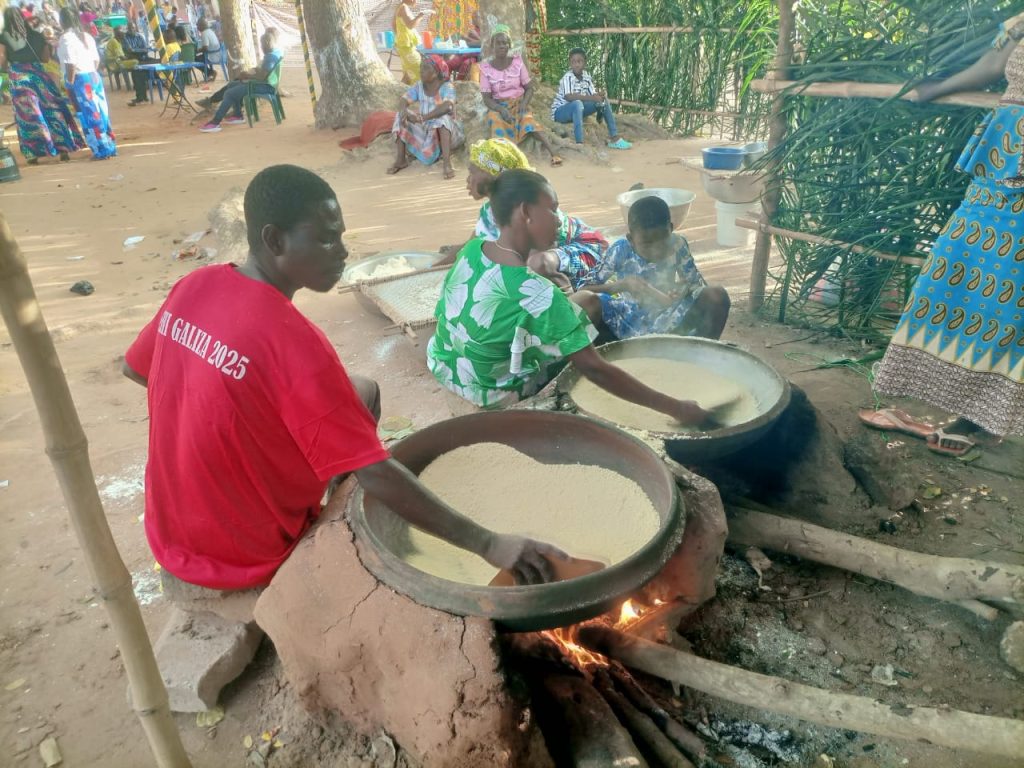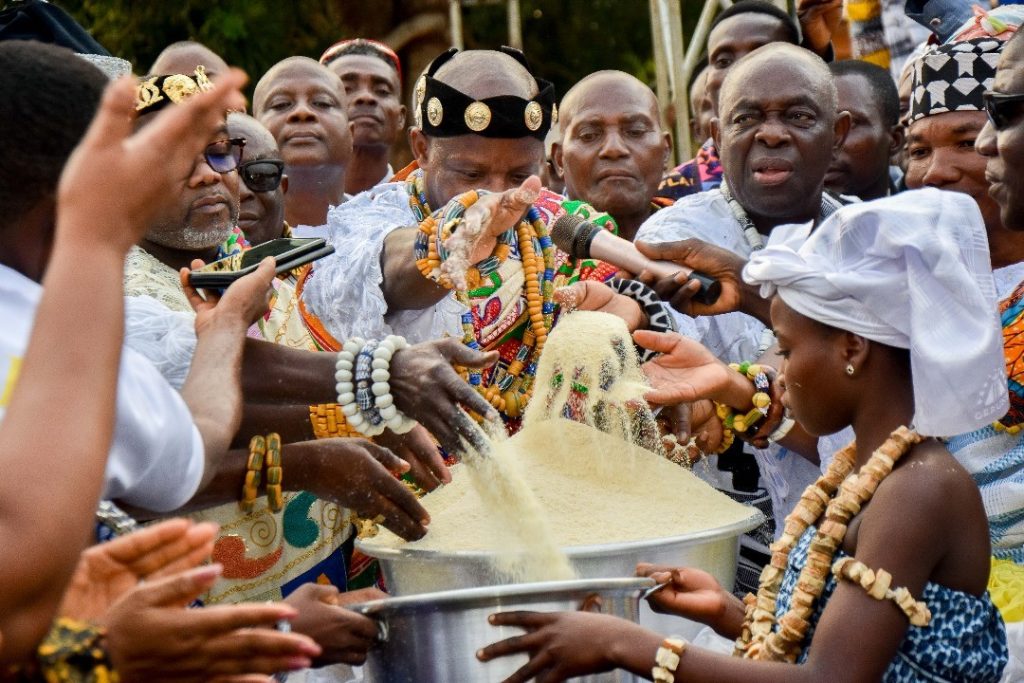To many Ghanaians, gari is more than just food—it is comfort, culture, and a companion.
From secondary school corridors, to the dinner tables of homes to construction sites across Ghana and some West African countries, gari remains a staple that transcends class and background.
Introduction: a comfort, a culture, a companion
Students affectionately call it their “companion,” a reliable source of sustenance, when other provisions run out.
“Anytime I have gari in my chop box, I’m okay,” said Emmanuel, a second-year student at Weta Senior High Technical School, in an interview with the Ghana News Agency (GNA).
“If you make provision for me without gari, then my provision is incomplete,” added Abigail Dagba of Mawuli School.
Even teachers share this sentiment. Madam Rosemary Aduamah Okai, a teacher at Mawuli School and a native of Dzemeni, said: “gari is the first food I make sure to get anytime I’m coming back from vacation,” she said with smiles.
Cassava: the root of gari
Cassava (Manihot esculenta), the base raw material for processing gari, is a drought-resistant root vegetable cultivated across Ghana, West Africa, South America among others. Its adaptability makes it a cornerstone of food security and rural livelihoods.

Nutrition and culinary versatility
Gari originates from cassava; it is rich in carbohydrates and contains moderate protein, making it an energy-packed food. It is used in dishes like: Eba in (Nigeria and Ghana), Akple (Volta Region) and Gɔbɛ (Gari with beans in Ghana, Togo).
Economic impact: ehi’s gari economy
In southern Volta, particularly Ehi in the Ketu North Municipality, Tongu enclave, and some districts in Oti including Nkwanta North and South, where gari is produced commercially.
Patrons allude to gari as more than a meal—it’s a livelihood.
Gari is not just food—it’s business. gari production, fuels local economies and provides employment, especially for women in many rural areas.
Madam Abla Agbalenyo of Gbegbekorpe runs a gari business that helped educate all six of her children.
Mr. Kwablatse of Adrume supplies cassava from his 20-acre farm to local processors.
“Sometimes I use a small portion for domestic gari production, but I sell most of it to processors,” he said.
Innovation: the gari festival and new varieties
Since the launch of the Ehi Nutome Gali Za (Gari Festival) in 2016, five innovative varieties have emerged: Potato Gari, Ginger Gari, Turmeric Gari, Coconut Gari and Sobolo Gari.
Mr. Christian Tikor, Assembly Member and a gari producer, explained the process of gari production to GNA.
“Gari processing in Ghana involves peeling and washing fresh cassava, followed by grating it into a fine mash. The mash is then fermented, squeezed to remove liquid, and sieved to get grits. Finally, the grits are fred to produce gari, which can be white or yellow, depending on whether palm oil is added during the frying stage.”
He says the industry is evolving from artisanal, mostly rural-based, women-led production to more mechanised, efficient processing, and is a significant agro-industrial venture in Ghana.
“We mix ingredients like ginger, turmeric, or coconut with cassava before frying the product,” adding that, for Potato Gari, “we use French leave potato instead of cassava.”
These innovations aim to enrich gari with nutrients and position it for international markets.

Health benefits: beyond carbohydrate
Nutritionist Mr. Carl Makafui Agbittor highlights the benefits of each variety:
Potato Gari – Rich in fibre, iron, zinc, beta carotene; aids digestion and eye health;
Ginger Gari – Reduces bloating, packed with antioxidants;
Coconut Gari – High in fiber and healthy oils; improves gut health and energy;
Turmeric Gari – Boosts immunity; contains vitamins B3, B6, and C; and
Sobolo Gari – Supports heart and kidney function; aids weight management.
Myth busting: gari and vision loss
Dr. Kwame Oben-Nyarko of Third Eyecare debunks the myth that gari causes blindness, saying “gari does not cause blindness. Poorly processed cassava may contain cyanide, but properly processed gari is safe and nutritious.”
He adds that Potato Gari contains Vitamin A, which supports retinal health.
Challenges and future outlook
Despite innovation, Ehi’s producers face hurdles—chiefly the lack of modern processing facilities. During the Ninth Gari Festival, Togbui Dzeble Adukpo IV appealed for government and private investment in a gari factory to boost production and align with Ghana’s 24-Hour Economy policy.
Dr. Elikplim Kwabla Afetorgbor, Commissioner, and the Volta Regional Representative, National Development Planning Commission (NDPC) says the innovations being witnessed in recent time around gari — with the introduction of turmeric, sobolo, and ginger variants — reflect exactly the kind of local value addition we are encouraging across the Volta Region.
This transformation of a traditional product into a diversified, health-conscious, and export-ready commodity shows how our local enterprises are adapting to changing consumer preferences while leveraging indigenous knowledge.”
Dr Afetorgbor envisions “gari evolving into a signature Volta brand—packaged attractively, fortified with natural additives, and recognised globally.”
Through partnerships with technical institutions and investors, we’re also working to establish agro-processing hubs that can sustain such innovations at scale.”

Ultimately, “gari is more than food — it is becoming a symbol of local creativity, economic empowerment, and regional identity,” Dr Afetorgbor added.
Conclusion: gari as a symbol
From humble chop boxes to export ambitions, gari is more than food—it’s a story of resilience, innovation, and national pride. It fuels local economies, empowers women, and reflects the creativity of Ghana’s people.
GNA





